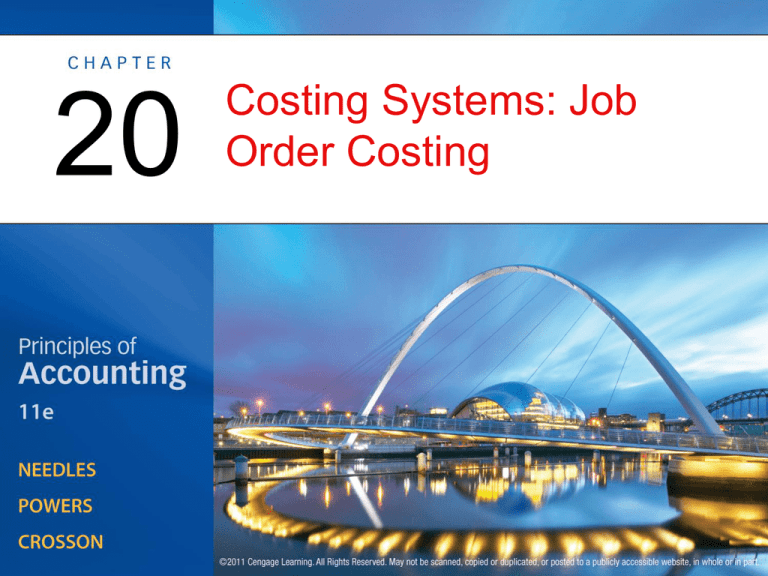
20
Costing Systems: Job
Order Costing
Product Unit Cost Information and the
Management Process
OBJECTIVE 1: Explain why unit cost is
important in the management process.
Product Unit Cost Information and the
Management Process
• In the planning stage, managers use cost
information to
– Develop budgets.
– Establish prices.
– Set sales goals.
Product Unit Cost Information and the
Management Process
• In the planning stage, managers use cost
information to (cont.)
– Plan production volume.
– Estimate product or service unit costs.
– Determine human resource needs.
Product Unit Cost Information and the
Management Process
• During the year, managers use cost
information to
–
–
–
–
Make decisions about controlling costs.
Manage the company’s volume of activity.
Ensure the quality of products or services.
Negotiate prices.
Product Unit Cost Information and the
Management Process
• When evaluating performance, managers
use cost information to
– Evaluate actual and planned performance.
– Adjust planning and decision-making
strategies.
Product Unit Cost Information and the
Management Process
• When communicating in reports, managers
use cost information to
– Determine inventory balances and the cost of
goods or services sold for the financial
statements.
– Prepare internal reports that compare actual
unit costs and targeted costs.
©2011 Cengage Learning All Rights Reserved. May not be scanned, copied or duplicated, or posted to a publicly accessible website, in whole or in part.
Product Costing Systems
OBJECTIVE 2: Distinguish between the two
basic types of product costing systems, and
identify the information each provides.
Table 1: Characteristics of Job Order
Costing and Process Costing Systems
Product Costing Systems
• To track product costs throughout the
management process, an organization may
use a job order costing system, a process
costing system, or a hybrid version of the
two.
Product Costing Systems
• The type of product costing system an
organization uses depends on the nature of
its production process.
Product Costing Systems
• Organizations whose units of output are
quite different—that is, they make custom,
unique, or special-order products—
typically use job order costing.
– A job order costing system traces the costs of
direct materials, direct labor, and overhead to a
specific batch of products or a specific job
order.
• A job order is a customer order for a specific
number of specially designed, made-to-order
products.
Product Costing Systems
• Organizations whose units of output are
quite different—that is, they make custom,
unique, or special-order products—
typically use job order costing.
– A job order costing system traces the costs of
direct materials, direct labor, and overhead to a
specific batch of products or a specific job
order. (cont.)
• A job order cost card is the document on which all
costs incurred in the production of a particular job
order are recorded.
Product Costing Systems
• Organizations that produce large amounts
of similar products or liquids or that have a
continuous flow of identical products
typically use process costing.
– Examples of products whose production flow
makes them suitable for process costing
include bricks, beverages, paint, and paper.
Product Costing Systems
• Organizations that produce large amounts
of similar products or liquids or that have a
continuous flow of identical products
typically use process costing.
– A process costing system first traces the costs
of direct materials, direct labor, and overhead
to processes, departments, or work cells and
then assigns an average cost per unit to the
products produced by those processes,
departments, or work cells.
©2011 Cengage Learning All Rights Reserved. May not be scanned, copied or duplicated, or posted to a publicly accessible website, in whole or in part.
Job Order Costing in a Manufacturing
Company
OBJECTIVE 3: Explain the cost flow in a
manufacturer’s job order costing system.
Exhibit 1: The Job Order Costing
System—Augusta, Inc.
Exhibit 1: The Job Order Costing
System—Augusta, Inc.
Job Order Costing in a Manufacturing
Company
• Cost flows in a manufacturer’s job order
costing system are recorded as follows:
– The costs of materials are first charged to the
Materials Inventory account and are recorded
in the corresponding accounts in the Materials
Inventory account’s subsidiary ledger.
Job Order Costing in a Manufacturing
Company
Job Order Costing in a Manufacturing
Company
– Labor costs are first accumulated in the
Factory Payroll account.
Job Order Costing in a Manufacturing
Company
– The various overhead costs (including indirect
labor costs and indirect materials) are first
charged to the Overhead account.
• As products are manufactured, the costs of direct
materials and direct labor are transferred to the
Work in Process Inventory account and are
recorded in a subsidiary ledger of job order cost
cards that supports the Work in Process Inventory
account.
Job Order Costing in a Manufacturing
Company
• Overhead costs applied at a predetermined
overhead rate are charged to the Work in Process
Inventory account and are recorded in that
account’s subsidiary ledger. These charges are used
to reduce the balance in the Overhead account.
Job Order Costing in a Manufacturing
Company
– When products and jobs are completed, the
costs assigned to them are transferred to the
Finished Goods Inventory account and are
recorded in that account’s subsidiary ledger.
Job Order Costing in a Manufacturing
Company
– When the products are sold and shipped, their
costs are transferred to the Cost of Goods Sold
account.
Job Order Costing in a Manufacturing
Company
– Any balance in the Overhead account at the
end of the period is closed to Cost of Goods
Sold.
• Underapplied overhead
• Overapplied overhead
©2011 Cengage Learning All Rights Reserved. May not be scanned, copied or duplicated, or posted to a publicly accessible website, in whole or in part.
A Job Order Cost Card and the
Computation of Unit Cost
OBJECTIVE 4: Prepare a job order cost card,
and compute a job order’s product or
service unit cost.
Figure 1: Job Order Cost Card for a
Manufacturing Company
Figure 2: Job Order Cost Card for a
Service Organization
A Job Order Cost Card and the
Computation of Unit Cost
• In a job order costing system, all the costs
of a particular job’s direct materials, direct
labor, and overhead are accumulated on a
job order cost card.
– Because all manufacturing costs are
accumulated in one Work in Process Inventory
account, a subsidiary ledger made up of job
order cost cards is needed to trace the costs of
specific jobs.
A Job Order Cost Card and the
Computation of Unit Cost
• Product unit cost in a job order costing
system is calculated as follows:
– Total all manufacturing costs recorded on a
particular job order cost card.
– Divide total manufacturing costs by the
number of units produced for that job.
A Job Order Cost Card and the
Computation of Unit Cost
• Service organizations use job order cost
cards to record the costs of labor, materials
and supplies, and overhead incurred in
performing a particular job and to
determine selling prices in cost-plus
contracts.
©2011 Cengage Learning All Rights Reserved. May not be scanned, copied or duplicated, or posted to a publicly accessible website, in whole or in part.

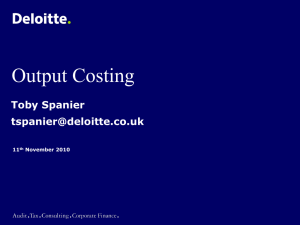

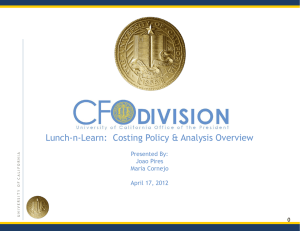
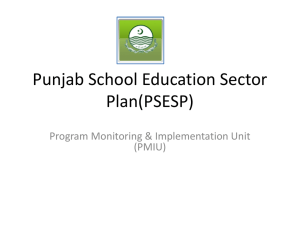
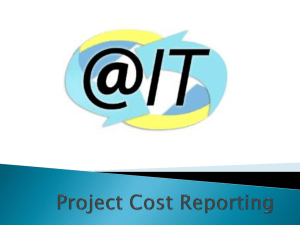
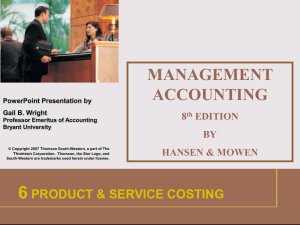

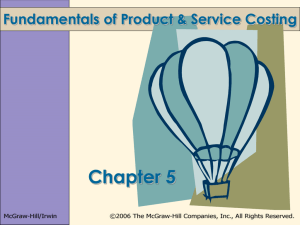
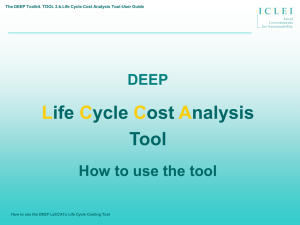
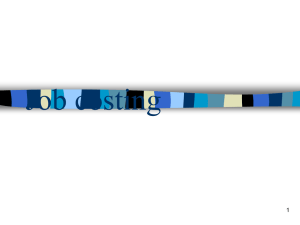
![Research Budget Seminar 2011 [MS PowerPoint Document, 1.9 MB]](http://s2.studylib.net/store/data/005266092_1-6f9260128baeee466f98ffcb88179aa1-300x300.png)
